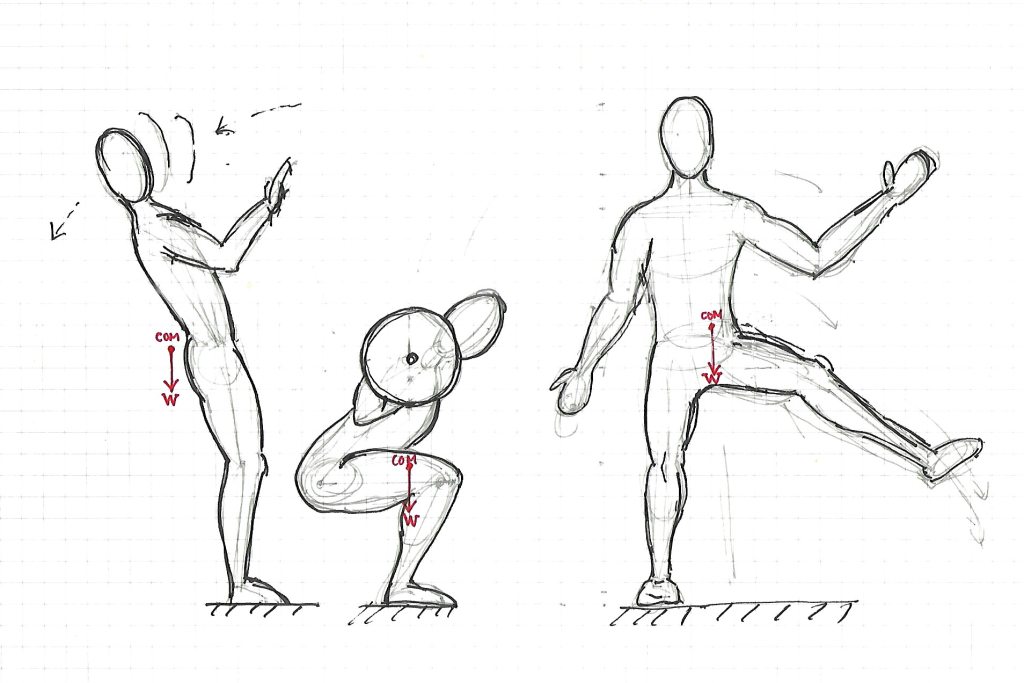
Let’s continue our effort in learning proper bro-science! This particular one is important in ensuring the safety of our muscular gains endeavour because there’s nothing scarier than falling forward face first with a heavy bar on your back. Let’s talk about balance and stability.
But before that, there’s another concept that we need to understand.
Center of Mass
Often in science, we simplify an object or an occurrence into a more simplified model. Creating a model can simplify the process of understanding and often when needed, allow for more practical process calculations.
The center of mass(COM) is one of them. COM is a single point representing the location where the average mass of the object is present. For example, imagine a two-dimensional solid square of consistent density. Its center of mass will be right in the middle of the box.
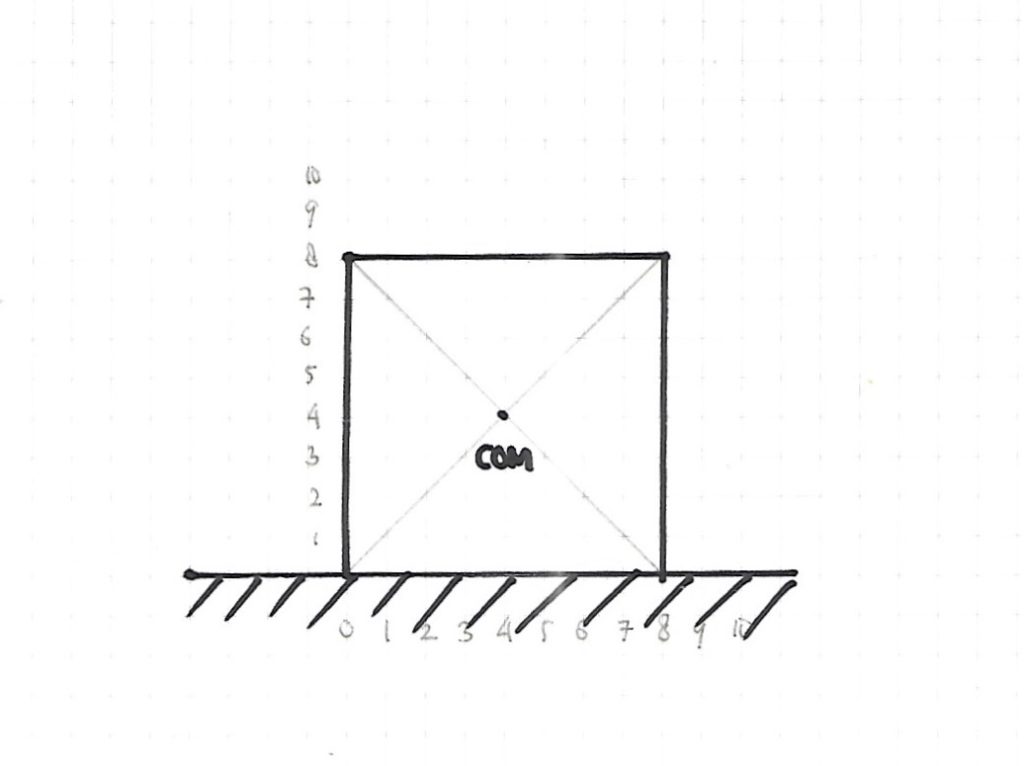
Now, another identical two-dimensional box is stacked directly on top of it. If we want to view the boxes as one system, they will have a new “Combined Center of Mass (CCOM).” In this case, the CCOM is still at the center, now at a higher position, specifically between the two boxes.
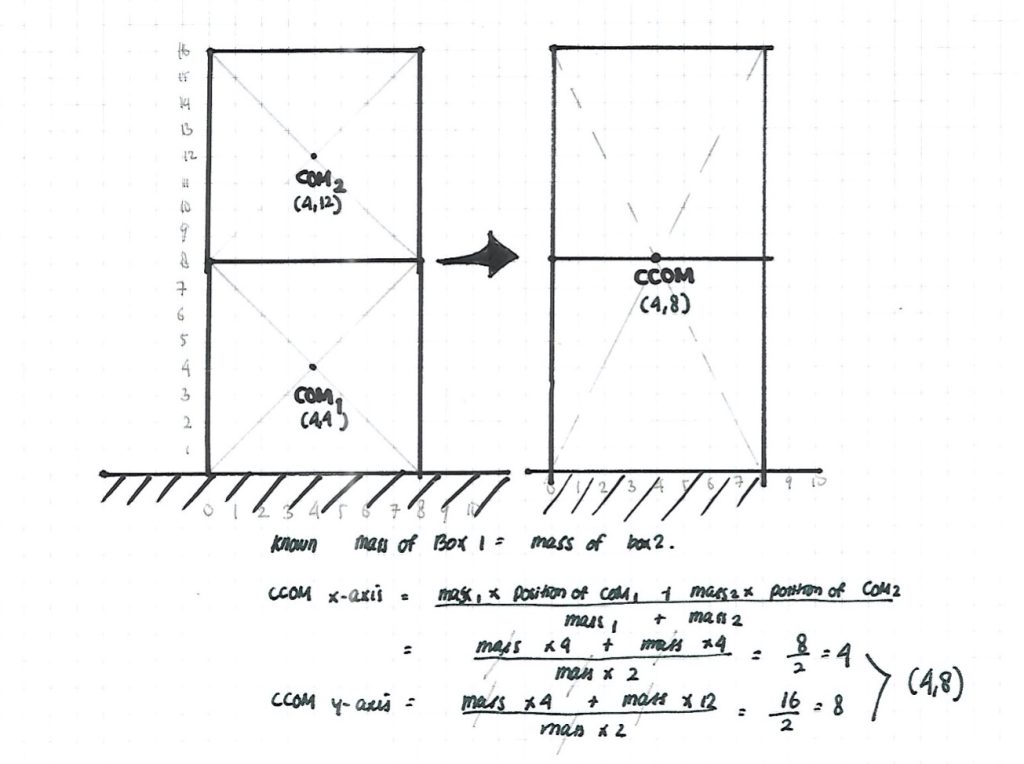
If these two boxes have different masses, the new center of mass will not be right in the middle of those two boxes. Instead, the CCOM will always be closer to the center of the heavier object.
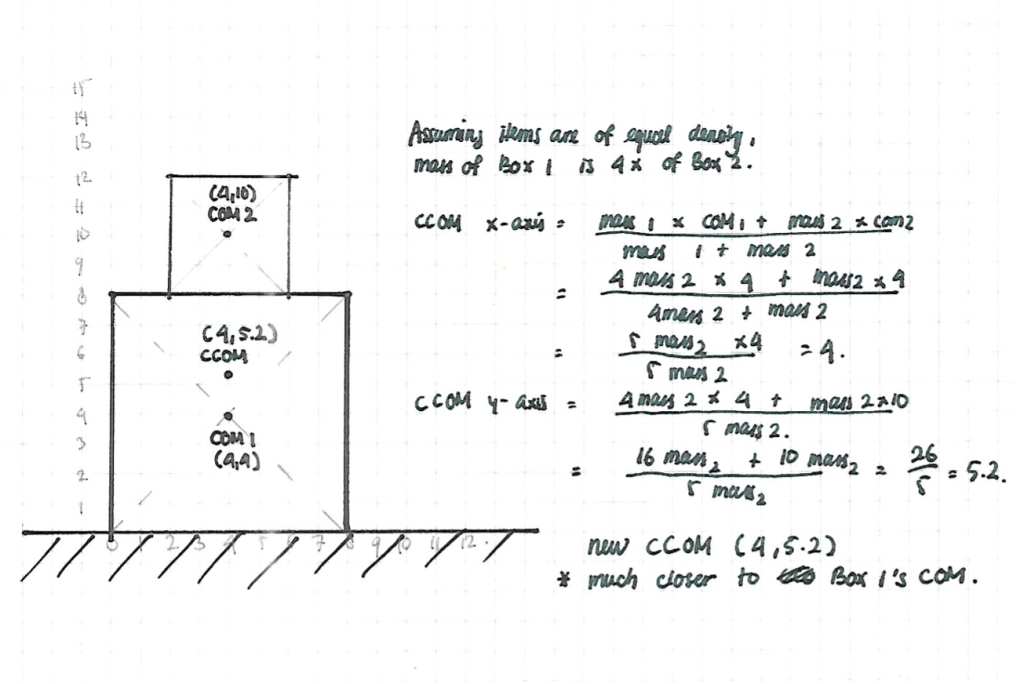
Let’s apply this to a human in their effort to lift some weight.
In a normal anatomical position, a human stands erect with their feet together, arms down, and palms facing forward; they will have their center of mass somewhere in front of their sacrum.
The barbell has a COM right at the center of the barbell itself, if it’s loaded equally.
When a lifter carries a barbell in a standing position, say on top of the squat, the center of mass will change depending on the bar’s weight. The heavier the bar, the closer the CCOM to the bar, away from the COM of the lifter.
Imagine a 120kg lifter carrying 60kg on their back versus a 60kg lifter holding a 120kg barbell. The CCOM of the 120kg lifter will be closer to his navel, his center of mass, versus the lighter lifter, who carries a heftier weight.
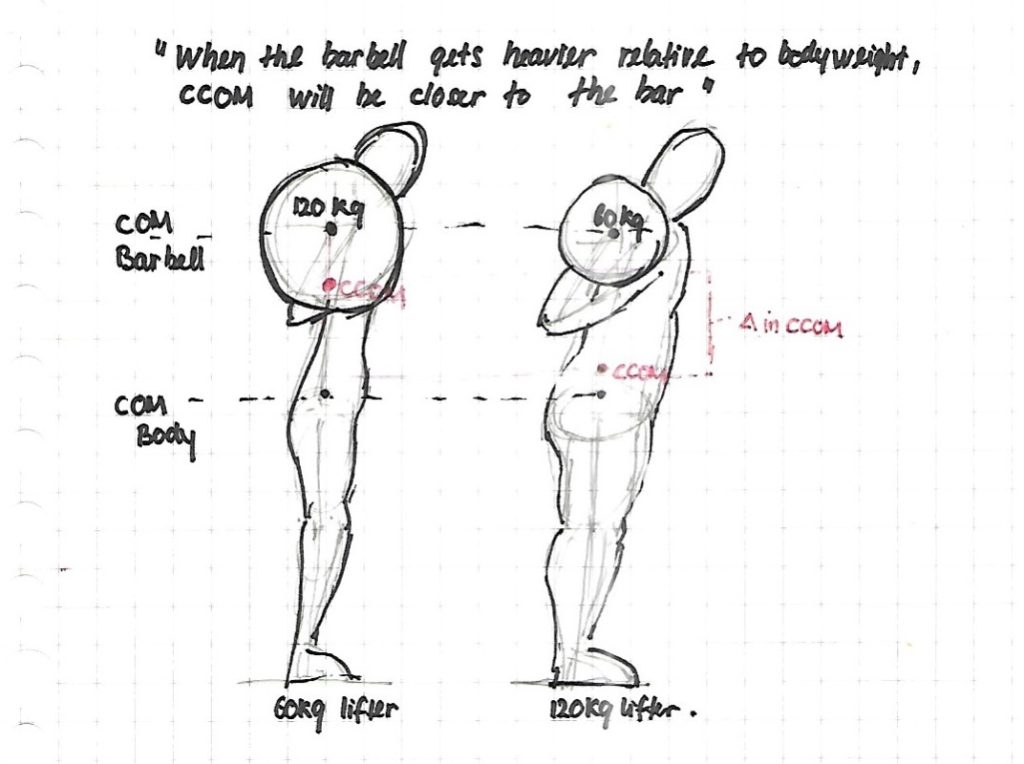
The lifter’s body posture and the bar’s position also change the center of mass.
If you lean back, the mass center will go behind the original position.
If you squat down, the COM will be lower than the original position.
If you lift your right arm and right leg sideways, the COM will go toward the right.
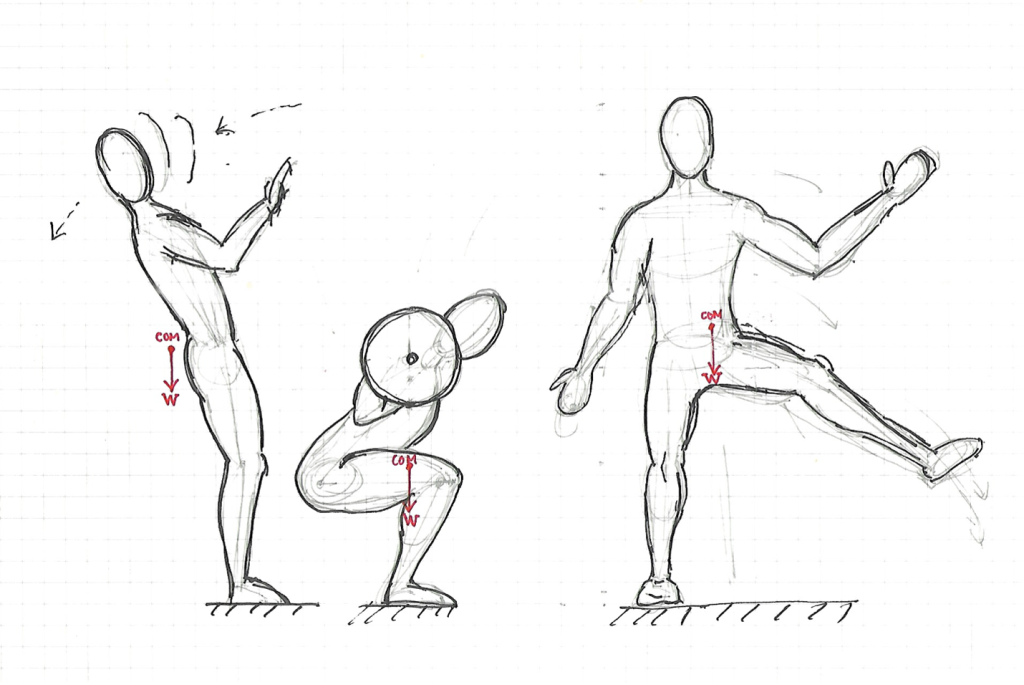
Why does this occur?
We can also understand the center of mass as a point from which a body or system’s weight may act.
Our mass is affected by gravity. We know how much we weigh by multiplying our mass with the gravity constant.
Weight (W) = Mass (m) x Gravity constant (g)
Thus, when we see a dot representing the COM in the previous illustration, we can represent it more accurately by drawing a vector arrow of the weight.
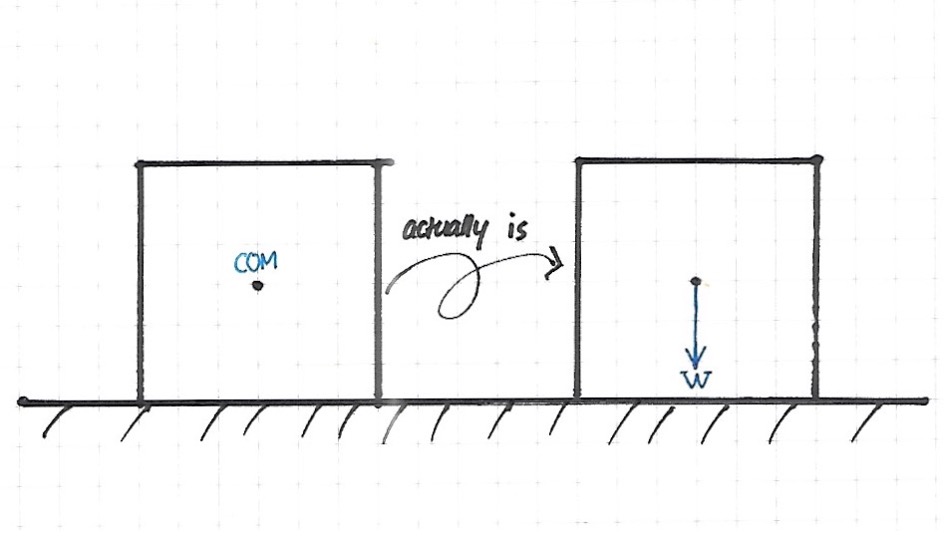
Understanding that there’s an internal force working on the object, we can understand the principles of balance a little easier. When the base of support (BOS) lies underneath your COM, you are in a stable/balanced position. However, your object will topple if the COM is outside our BOS.
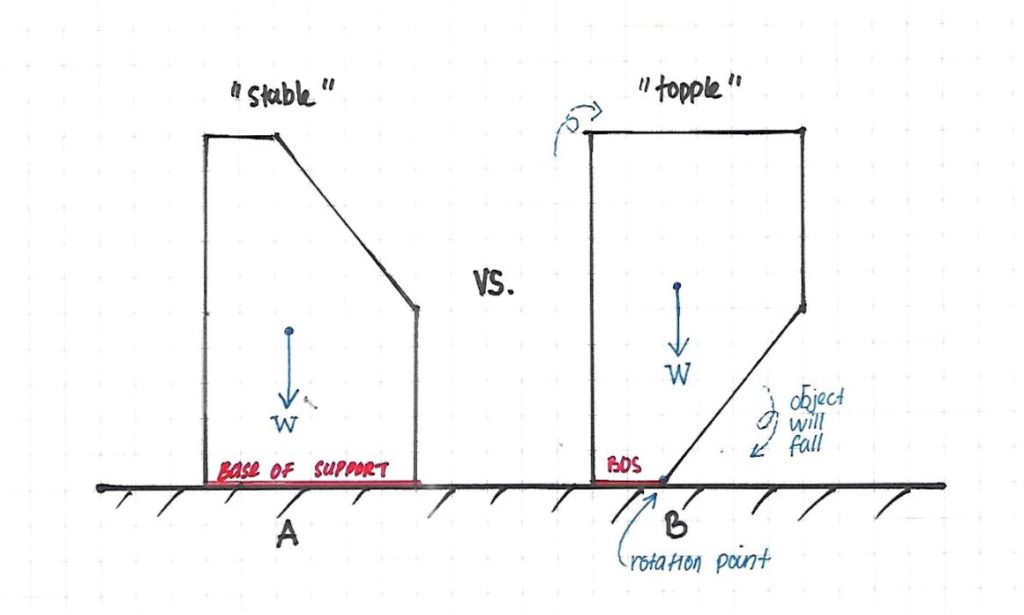
Tall versus short
Short guys all around the world, rejoice! Theoretically, you are more stable than your taller friends. This is because a shorter object generally has a lower COM than a taller object. So let’s discuss how this affects stability.
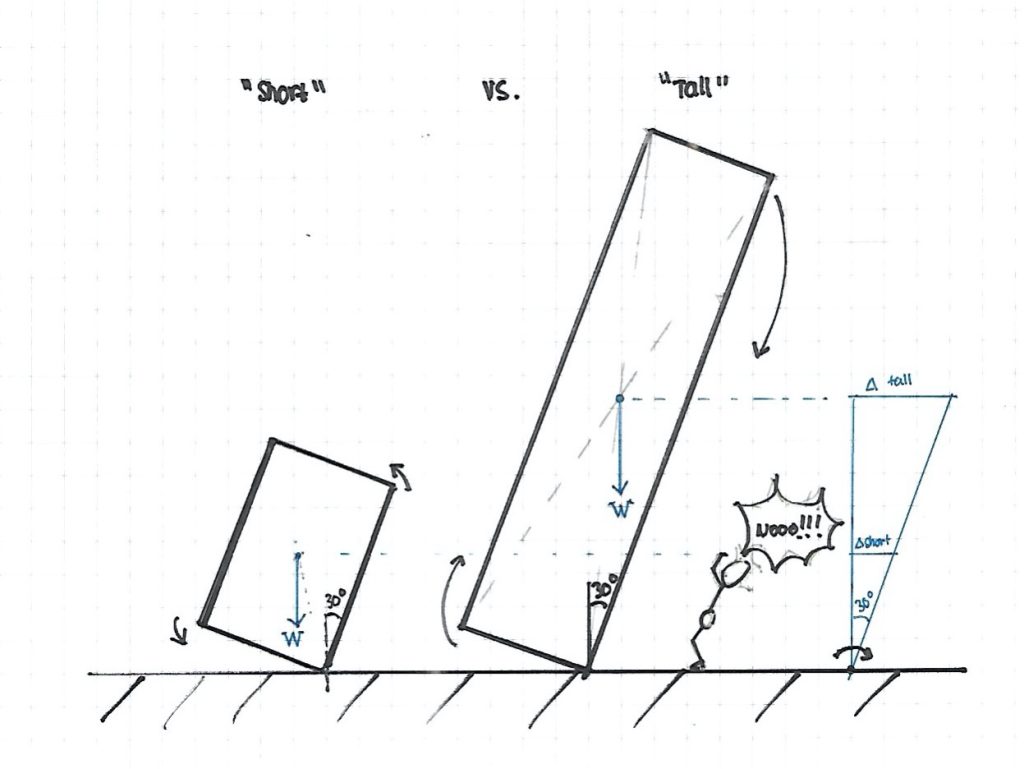
Assume two uniform objects only differing in height. These two objects are tilting at the same angle. The short object will still have its COM within the BOS, whereas the taller one will have its COM beyond the BOS. As a result, the shorter object will rotate back to the left and stand on the base, whereas the taller object will turn clockwise and fall to its side.
If you look at the blue triangle in the illustration, you can see that the further you go from the center of rotation, there will be more horizontal displacement. The higher your COM, the greater amplitude of sway and the more likely that your COM will shift outside your base of support.
That amount of sway will also create an unnecessary moment arm—the greater the moment arm, the greater the moment force that creates instability. Thus, when an object with higher COM sway, the more energy and effort the lifter needs to bring themself back in balance.
Example of Effect of CCOM Height on Barbell Lifts: Press vs. Deadlift
This concept explains why a misgroove in the press is more impact than a deadlift.
If you have done both lifts, you will agree that a press is less forgiving when you make a mistake while performing the lift. A slight deviation in the press is catastrophic, while in a deadlift, there’s more chance you can muscle it to completion.
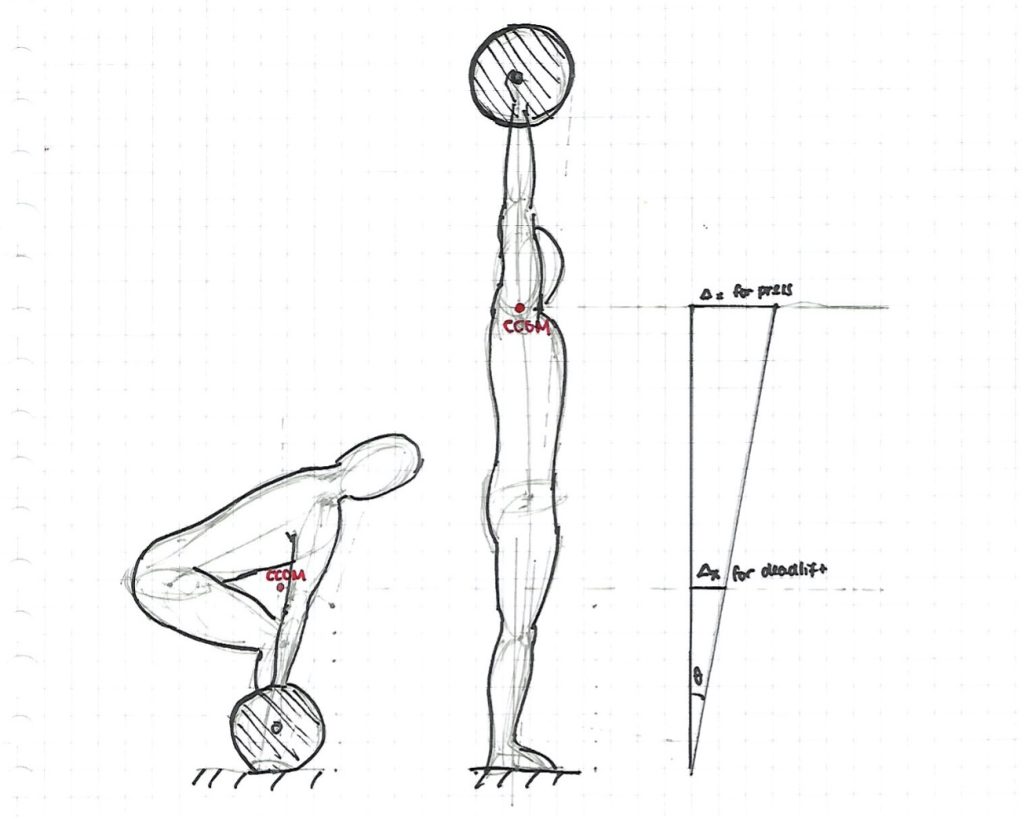
A press has a much higher CCOM as compared to a deadlift. Imagine a degree of sway happens to both lifts. For a deadlift, where the CCOM is low, there might be a slight horizontal deviation from the midfoot. However, the amplitude of sway gets more significant for a longer object, or in this case, a longer kinetic system of an overhead press.
Obviously, this is not the sole reason why the press is more technique sensitive. Seeing it from the lens of physiology, the muscle groups that move a deadlift are much bigger than the press. The bigger and stronger muscle mass of your hip and knee extensors, along with the other stabilizers on the calf, can tolerate more bar path inefficiency in your deadlift versus the much smaller deltoids and triceps in the overhead press.
Solution for this?
Practice! Especially for lifts where execution needs to be precise, like the press.
And finally, remember this master cue in Starting Strength method.
“Stay mid-foot”
Staying mid-foot represents a condition where your CCOM is aligned directly in the middle of your base of support. When your balance is in midfoot, you will feel equal pressure on the toes and heels; the weight is fully spread out. Staying midfoot is ideal because when your CCOM is directly over your BOS, you are in the position where the maximum moment is required to disturb you before you fall, which is a pretty good idea if you’re not on falling over while lifting.

